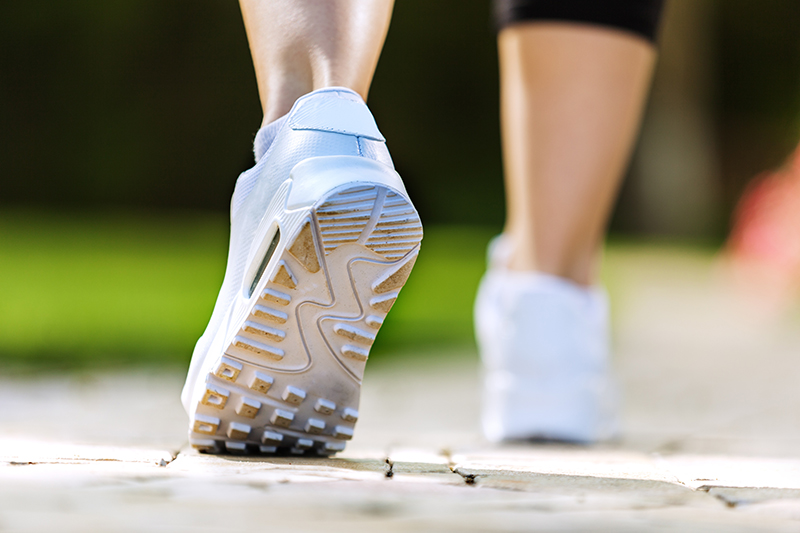Running is arguably one of the greatest forms of exercise available. It’s free, it’s invigorating, and just about anyone can do it. However, an approximate one third of runners will experience a running related injury at some point in their lives, and in a lot of cases, these injuries are preventable.
The majority of running related injuries (approximately three quarters) occur in the lower leg; that is the knee, shin, ankle or foot. While some injuries are minor and easily dealt with (such as blisters or bruises caused by falls), others are more serious and will require lots of rest and possible medical intervention. Significant injuries may even result in the inability, or fear of running again. Prevention against injuries is key to maintaining your running enjoyment.
Things to avoid, to prevent against running injuries:
Overdoing it:
The quickest way to guarantee a running injury is to run too much.
Instead of pushing yourself unrealistically, make sure you listen to your body; pain is your body’s way of saying something needs to change, and shouldn’t be pushed through.
Consider increasing running goals gradually; a good rule of thumb is 10% per week, but even that might be too much for some.
Remember that your body is your body, and it’s going to function differently to someone else’s. You run your own race, so run at your own pace too.
Hard or uneven surfaces:
Running is an impact sport; every time your foot hits the ground, up to three times your body weight is potentially landing on it. Hard surfaces only compound that issue, often resulting in knee and shin pain. Where possible, avoid hard surfaces such as bitumen and concrete, in favour of softer ones.
Similarly, uneven surfaces should be avoided when possible. Loose gravel, or sand, or paths that may have holes, can all cause significant ankle injuries. If you know you have a problem in that area, be extra vigilant to only run on flat, level surfaces.
Incorrect shoes:
Properly fitted footwear is essential for runners, and while shoes can be expensive, this is a good investment against potential, knee, shin and ankle injuries. Shoes have the ability to alter your form, and therefore affect how the impact of running is applied to the body. Getting shoes professionally fitted is helpful, but not always essential. Trust how you feel; if shoes don’t feel comfortable, or you’re in a lot of pain after your run, it’s possible they are applying stress to your body. Conversely if the shoe feels good, it’s highly likely that it is good.
Things to do to prevent against injury:
Warm Up:
We’ve discussed the importance of warming up before, but it’s worth repeating. Cold muscles are more likely to tear and require treatment, while warm ones have greater flexibility. Warm ups with added stretches are a fast, simple way to prevent running injuries.
Cool Down:
Of course the opposite of the warm up is the cool down, and it is just as important. A cool down allows the heart to return to its resting state gradually, while also flushing out toxins, reducing lactic acid, and maintaining healthy muscle function.
Rest if you need it:
If you’ve recently had an injury, or you acquire one, the best thing to do is follow the RICE principles. Rest, Ice, Compression and Elevation. Often times the temptation is to ice and push through, but rest is vitally important, and will get you back to full function much quicker.
Strength and Cross-Train:
Our body parts don’t work in isolation, and when one part hurts, the whole body hurts. Strength training in other areas of our body can prevent running injuries. A strong core and hips can reduce knee and ankle injuries; how we move through the middle of our body, determines how our legs and feet function. Training and improving different parts of the body can actually improve your running speed, and endurance, as well as prevent against possible injury.
See your doctor or physio if you need to:
If you have suffered an injury, be sure to get it checked out. The quicker you can deal with the effect, the quicker you’ll be back out on the running track, without having pushed yourself unsafely.
Running is a great way to stay fit and healthy, and it doesn’t have to be riddled with injuries. By applying these basic principles, you’re preventing unnecessary strain, and time off from the running track; which I’m sure we all agree is something everyone is keen to avoid.
Whether you’re hoping to improve your technique, performance or to prevent injury, we are currently facilitating personalised running assessments at Queen Street Physiotherapy.
The running assessments take you through a series of tests to measure and record your muscle length and strength, provide you with video recorded feedback, technique advice and a strengthening program if required. Contact us for more information.



One Response